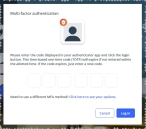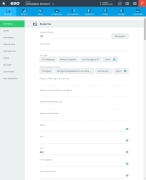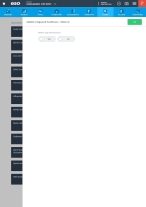Mobile integrated healthcare - referral
A referral is the act of directing someone to a person or authority that is qualified to deal with an issue, for consultation, review, or further action. A mobile integrated healthcare referral provides the patient with information about patient-centered, mobile resources outside a hospital environment.
These resources can include:
-
Community paramedics
-
Advanced-practice provider (PA-C, NP) responders
-
Alternate medical facilities
-
Substance use treatment or support groups
-
Medical or non-medical transportation
-
Nutrition: Meals on Wheels, food pantries, SNAP applications
-
Older adult services: AAA, Alzheimer's support groups, senior centers
-
Housing assistance
In rural areas, faith-based organizations are often important stakeholders and provide many social and community services. The approach aims to coordinate resources and help patients get the right care at the right location, including assisting them in taking better care of themselves in their own homes.
-
 (If you have not done so already) Access the EHR module in the ESO Suite.
(If you have not done so already) Access the EHR module in the ESO Suite.
-
Do one of the following.
-
(If you are already working in the ESO Suite) Click the Home icon in the upper left corner of the screen.
-
 (If you have not yet logged in) Log in to the ESO Suite.
(If you have not yet logged in) Log in to the ESO Suite.
-
In a web browser, go to https://www.esosuite.net/EsoSuite.
The ESO Suite login screen appears.
-
Enter your user name, password, and agency name, then click Let's Go.
If MFA is enabled, the Multi-factor authentication dialog box appears, displaying one or more methods you can use to verify your login credentials. The number of methods that appear in the dialog box depends on what MFA methods your ESO Suite administrators enabled in the Admin module.

Click graphics
to open them.Information on enabling MFA and specific MFA methods is available in the Admin module online help, in Configure multiple-factor authentication.
Note: If your ESO Suite administrators have disabled MFA ("opted-out"), this dialog does not appear.
-
(If the Multi-factor authentication dialog box appears) Depending on which buttons appear in the dialog box, verify your login in one of the following ways.
 With an authenticator application.
With an authenticator application.
-
Click MFA verification via authenticator app.
The dialog box updates with boxes for entering the numbers of the authentication code, and the ESO Suite sends an authentication code to the authenticator application installed on your device.
-
Open your authenticator application and note the authentication code currently displayed.
-
Enter the authentication code displayed in the authenticator application.
-
Click Log In.
 With a text message (SMS).
With a text message (SMS).
-
Click MFA verification via SMS.
The dialog box updates with boxes for entering the numbers of the authentication code, and the ESO Suite sends an authentication code to the phone number recorded in your PM records and identified with MFA codes.
-
Enter the authentication code sent to your MFA-registered phone number.
-
Click Log In.
 With an email message.
With an email message.
-
Click MFA verification via email.
The dialog box updates with boxes for entering the numbers of the authentication code, and the ESO Suite sends an authentication code to your agency or department email address, recorded in your PM records.
-
Enter the authentication code sent to your agency or department email address.
-
Click Log In.
-
-
The ESO Suite landing screen appears.

Click graphics
to open them.Note: If MFA is enabled, you can access and manage your MFA options through the PM module, on the Settings > Account page, as described in Manage a user account. If your agency or department has enabled MFA but has not purchased the full-featured version of the PM module, you can access your own MFA settings by clicking Change my Multi-Factor Authentication settings on the landing screen, then using the Settings > Account page that appears. If your agency has not enabled MFA, the Change my Multi-Factor Authentication settings link does not appear on the landing screen.
-
-
On the top side of the home screen, click EHR.
Tip: If your screen or browser window is too narrow to display all your agency's ESO Suite module icons, an options icon appears on the right side of the icon bar. If you click the options icon, a menu appears containing additional module icons.
The EHR screen appears, displaying a list of patient records in the EHR module. The most-recent records appear at the top of the list.
Different record status icons can appear in the list.
Icon Status Unlocked/DraftThe patient record exists in the ESO Suite database, and all crew members listed in the patient record may edit all fields in the record. ESO Suite administrators and personnel with security roles of either
EHR SupervisororEHR Managercan edit non-clinical fields.MobileThe patient record exists on the mobile device, and has not been synchronized with the ESO Suite database. ESO Suite administrators, personnel with security roles of either
EHR SupervisororEHR Manager, and all crew members listed in the patient record can only access a print view of the record.Once the Mobile record synchronizes with the ESO Suite database. the record reflects its current status.
LockedThe patient record exists in the ESO Suite database, and is locked. Only non-clinical fields can be edited by crew members listed in the patient record, ESO Suite administrators and personnel with security roles of either
EHR SupervisororEHR Manager.
-
-
 (If you have not done so already) Add a new patient record, or search for the existing patient record you want to work with.
(If you have not done so already) Add a new patient record, or search for the existing patient record you want to work with.
Information on adding or opening a patient record is available in Add a patient record and Search for a patient record.
The patient record opens and displays the Incident tab, with the Response bookmark selected in the left pane. Fields appear in the right pane for specifying basic information about the incident
If you manually created a new patient record, the Incident Number and State Tracking Number fields populate automatically with ESO Suite-assigned values. You must enter data in all other required fields.
If you imported data from a CAD system, the Incident Number field populates with the data from that source. Other fields in the EHR module may also populate from these sources, depending on what data was recorded in them before the data was imported into the EHR module.
-
At the top of the page, click the Forms tab.
The contents of the Forms tab appear, listing all the forms your ESO Suite administrator has enabled in the Admin module.
-
Click Mobile Integrated Healthcare - Referral.
The Mobile Integrated Healthcare - Referral dialog box appears.
-
For Patient requires followup, click Yes or No to indicate whether or not the patient needs referral to another facility, provider, or program.
If you click Yes, additional fields appear in the dialog box.
-
 Specify referral details.
Specify referral details.
When you refer a mobile integrated healthcare program for the patient, you need to provide information about the type and name of the facility, provider, or program you are referring the patient to, reasons for the referral, and any alerts that facility, provider, or program needs to be aware of with regard to the patient.
-
For the following fields, click the field or the list icon to the right of the field, then select the appropriate single option from the menu that appears.
Field Information needed Patient Referred To
The type of facility, provider, or program you are referring the patient to, for future non-emergent assistance.
Example: Dentist, mental health agency, community medicine team
Name of Referral or Program
The specific name of the facility, provider, or program you are referring the patient to.
Example: Youth and Shelter Services, Story County Angels, Orchard Place, PACE Center, Child Guidance Center
 Understand the link between the EHR and Admin modules when selecting the name of the referral or program.
Understand the link between the EHR and Admin modules when selecting the name of the referral or program.
The menu options that appear in the Name of Referral or Program dialog box are defined in the Admin module, under EHR > Forms Tab > Configurable Lists > Name of Referral or Program.
Example: In the EHR module, for the Name of Referral or Program section, you may need options such as Youth and Shelter Services, Story County Angels, Orchard Place, PACE Center , and so forth.
Your ESO Suite administrator must add corresponding ADL items in the Admin module, under EHR > Forms Tab > Configurable Lists > Name of Referral or Programs, for these items to appear as menu choices in the EHR module.
If no options appear, or if the menu does not have an option that meets your needs, contact your ESO Suite administrator and ask them to add the necessary menu choices. You will need to work closely with your administrator to create and maintain these lists, as your department's needs evolve over time.
Information on building ADL lists for the EHR module is available in the Admin module online help, in Configure tabs.
-
For the following fields, click the list icon to the right of the field, select all the appropriate options from the menu that appears, then click OK or click outside the menu.
Field Information needed Reason for Referral
A list of the reasons you are referring the patient to a non-emergent facility, provider, or program you are referring the patient.
Example: Caregiver services, domestic abuse, food assistance, general medical care, mental health support
 Understand the link between the EHR and Admin modules when selecting the reason for the referral.
Understand the link between the EHR and Admin modules when selecting the reason for the referral.
The menu options that appear in the Reason for Referral dialog box are defined in the Admin module, under EHR > Forms Tab > Configurable Lists > Name of Reason for Referral. While a basic list of reasons is included by default, you may want to add options to this list that are relevant or unique to the community you serve.
Example: In the EHR module, for the Reason for Referral section, you may need options such as Grief Support, Childcare Assistance, Transportation Assistance, Potable Water Services, and so forth.
Your ESO Suite administrator must add corresponding ADL items in the Admin module, under EHR > Forms Tab > Configurable Lists > Name of Referral or Programs, for these items to appear as menu choices in the EHR module.
If no options appear, or if the menu does not have an option that meets your needs, contact your ESO Suite administrator and ask them to add the necessary menu choices. You will need to work closely with your administrator to create and maintain these lists, as your department's needs evolve over time.
Information on building ADL lists for the EHR module is available in the Admin module online help, in Configure tabs.
Location / Patient Flags
A list of any patient record flags or location flags relevant to the facility, provider, or program you are referring the patient to.
Patient flags are alerts on the patient's record, if they display certain high risk clinical needs and/or behavior problems. Location flags are specific facilities, providers, or programs that are capable of responding-to and assisting patients with high risk clinical needs and/or behavior problems.
Example: Anger issues, severe depression, substance abuse, suicide risk
 Understand the link between the EHR and Admin modules when selecting a flag for a location or patient.
Understand the link between the EHR and Admin modules when selecting a flag for a location or patient.
The menu options that appear in the Location / Patient Flags dialog box are defined in the Admin module, under EHR > Forms Tab > Configurable Lists > Location/Patient Flags.
Example: In the EHR module, for the Location / Patient Flags section, you may need options such as Anger management issues, Severe depression, Substance abuse, Suicide risk, and so forth.
Your ESO Suite administrator must add corresponding ADL items in the Admin module, under EHR > Forms Tab > Configurable Lists > Location/Patient Flags, for these items to appear as menu choices in the EHR module.
If no options appear, or if the menu does not have an option that meets your needs, contact your ESO Suite administrator and ask them to add the necessary menu choices. You will need to work closely with your administrator to create and maintain these lists, as your department's needs evolve over time.
Information on building ADL lists for the EHR module is available in the Admin module online help, in Configure tabs.
-
For Comments, type any additional information relevant to the resources you are referring to the patient.
-
-
Click OK.
The dialog box closes, and a green triangle appears in the upper right corner of the form button, to indicate that data exists in this form.

















